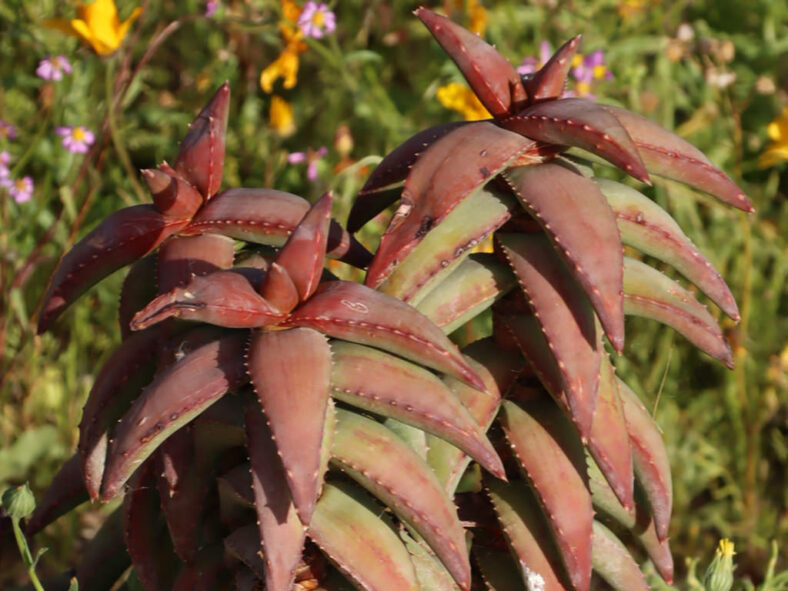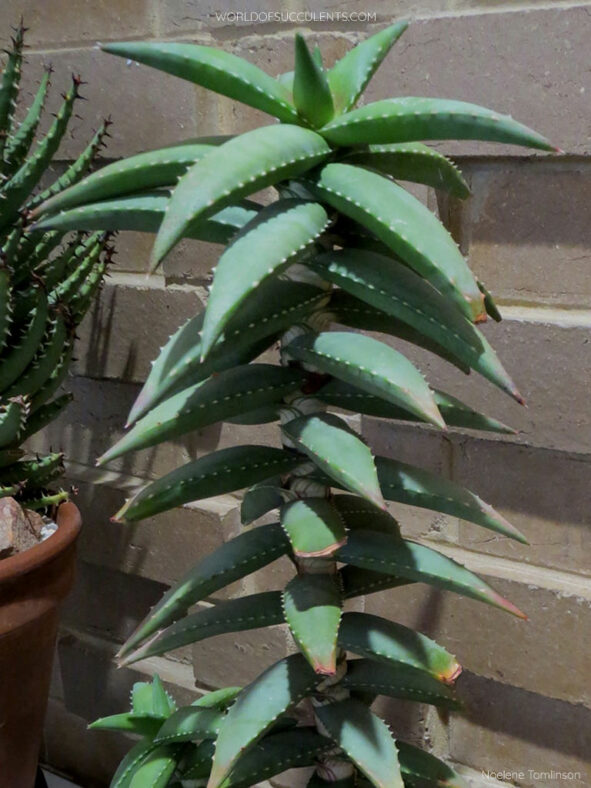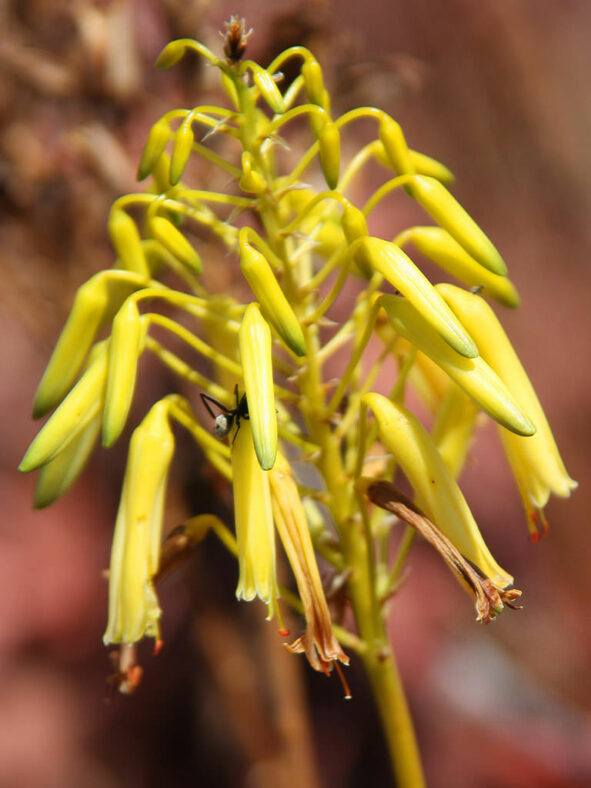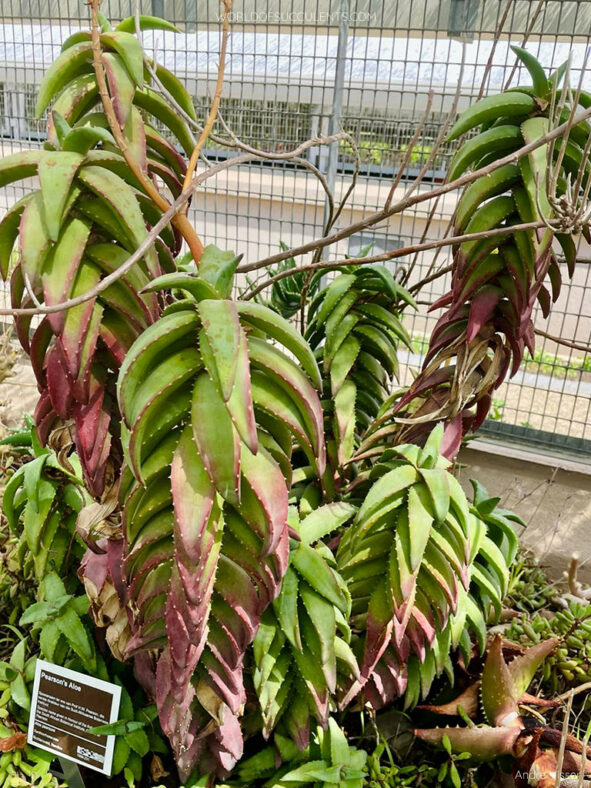Aloe pearsonii has a unique appearance, with rows of recurved leaves covering the stems, resembling a long, narrow skirt.
Scientific Name
Aloe pearsonii Schönland
Common Name(s)
Pearson's Aloe
Scientific Classification
Family: Asphodelaceae
Subfamily: Asphodeloideae
Genus: Aloe
Etymology
The specific epithet "pearsonii (peer-SON-ee-eye) honors Henry Harold Welch Pearson (1870-1916), a British-born South African botanist.
Origin
The native range of Aloe pearsonii extends from the mountains around Rosh Pinah in Namibia to Kubus in the Richtersveld in the Northern Cape province of South Africa. It grows in pockets of sandy soil among rocks.
Description
Aloe pearsonii is a shrubby succulent with many erect, rigid stems covered with recurved, neatly arranged leaves in four or five highly symmetrical vertical rows. The plant can reach up to 6.6 feet (2 cm) in height and branch from the base or sometimes higher up. The lower area of the stems is often clothed with a layer of persistent dead leaves. The leaves are nearly triangular and have margins armed with whitish to reddish deltoid teeth. They can grow up to 3.6 inches (9 cm) long and 1.2 inches (3 cm) wide. The leaves are dull bluish-green but can turn reddish, especially during drought.
During the summer, Aloe pearsonii produces inflorescences that are simple to 3-branched and bear dense conical racemes of golden yellow or red flowers. The flowers are cylindrical and can reach up to 1 inch (2.5 cm) in length. They are attached to the inflorescences by a slender pedicel about 0.8 inches (2 cm) long. The seed capsule can grow up to 0.9 inches (2.2 cm) long and 0.3 inches (0.8 cm) in diameter.

How to Grow and Care for Aloe pearsonii
Light: When growing Aloe pearsonii indoors, place it near a window with plenty of bright indirect sunlight. Rotate the pot once or twice a week to ensure all sides of the plant receive equal lighting. Outdoors, the plant prefers light shade, especially during the hottest parts of the day.
Soil: Great drainage is essential for growing this plant because too much moisture for an extended period can cause root rot. Use commercial soil for succulents, or make your own well-draining mix.
Temperature: When temperatures shift below 50 °F (10 °C), it is time to bring this plant inside. It tolerates heat fairly well but will not survive a hard frost. Aloe pearsonii grows best in USDA Plant Hardiness Zones 9b to 11b, with average minimum winter temperatures ranging from 25 to 50 °F (-3.9 to 10 °C).
Watering: This plant needs regular watering but can tolerate drought conditions for short periods. Water deeply, but only when the soil is completely dry to the touch, and do not let water stand in the rosettes. Cut back on watering during the winter months.
Fertilizing: Although it generally does not require fertilizer, Aloe pearsonii will benefit from extra nutrients. Use a water-soluble fertilizer diluted to half the recommended strength.
Repotting: Repot only as needed during spring. Pick a container that is one size larger and has drainage holes.
Propagation: Growing Aloe pearsonii from stem cuttings and offsets is possible, but it can take a long time for new roots to form, and the risk of overwatering and disease is high. The best results are achieved by sowing seeds during the warm months. However, if you prefer to use stem cuttings or offsets, it should only be done during the growing season.
Learn more at How to Grow and Care for Aloe.
Toxicity of Aloe pearsonii
Aloe pearsonii is non-toxic to people but can be mildly to moderately toxic to pets.
Hybrids of Aloe acutissima
Links
- Back to genus Aloe
- Succupedia: Browse succulents by Scientific Name, Common Name, Genus, Family, USDA Hardiness Zone, Origin, or cacti by Genus
Photo Gallery
Click on a photo to see a larger version.



